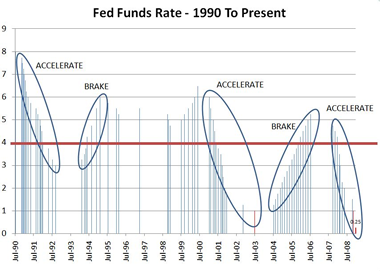Extreme Temperatures As A Measure Of Global Warming
SEARCH BLOG: GLOBAL WARMING
Yesterday, I posted some graphs of temperature high/low records for the 50 U.S. states. I wanted to be sure that there was no confusion about the information.
The data show records as of 2004 (when the available data ended from the source I used). Some readers may have interpreted the data to be the number of records set during the year, but that is not the case. Therefore, the 30 record high temperatures for 1936 are those that remain records after nearly 70 years.Also note that there is a bias for temperature records that are most recent. If a record was set and then matched by the same temperature for that month (different year) in that state, the latest date is used. This could cause the record temperatures for earlier years to be understated and somewhat overweight most recent records as a percent of the total. For example, if a (hypothetical) record high of 90 degrees in March 1930 for Oklahoma is matched in 1998, the 1998 data is shown and the 1930 data is dropped.
A commenter at Climate Science cited a post in RealClimate which supports my position that extreme temperatures should be an indicator or global warming if the records are most frequently at the most recent part of the timeline.
Further analysis showed that the absolute monthly maximum/minimum temperature was poorly correlated with that of the previous month, ruling out dependency in time (this is also true for monthly mean temperature - hence, 'seasonal forecasting' is very difficult in this region). Additional tests (Monte Carlo simulations) were used to check whether a spatial dependency could explain the deviation from the iid-rule, but the conclusion was that it could not explain the observed number of records. A similar conclusion was drawn from a similar analysis applied to a (spatially sparse) global network of monthly mean temperatures, where the effect of spatial dependencies for inter-annual and inter-decadal variations could be ruled out (Benestad, 2004). Thus, the frequent occurrence of record-high temperatures is consistent with a global warming.When you examine the graphs on yesterday's post, you will see that the most frequent period of record high temperatures was from 1930-1954... even after some records set during those years may have been eliminated by new records in later years. While 1998 and 2000 had a high number of records, the decade prior was notably average.








